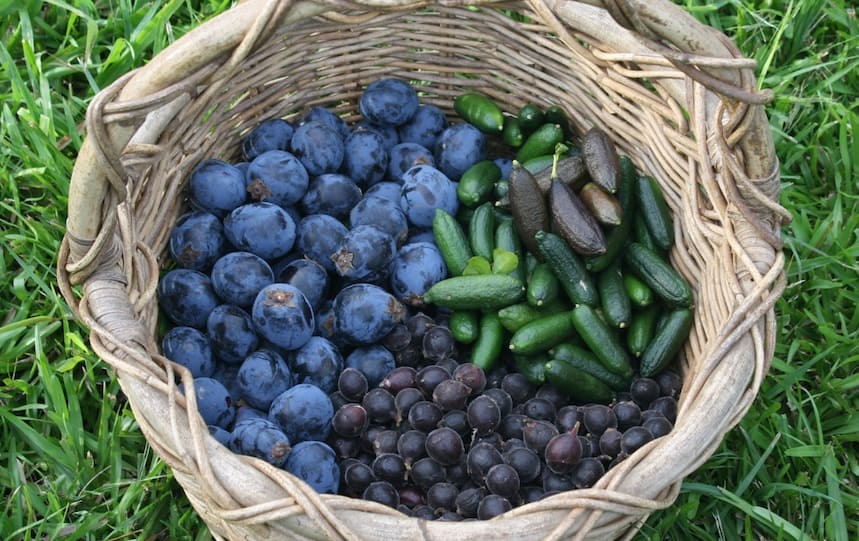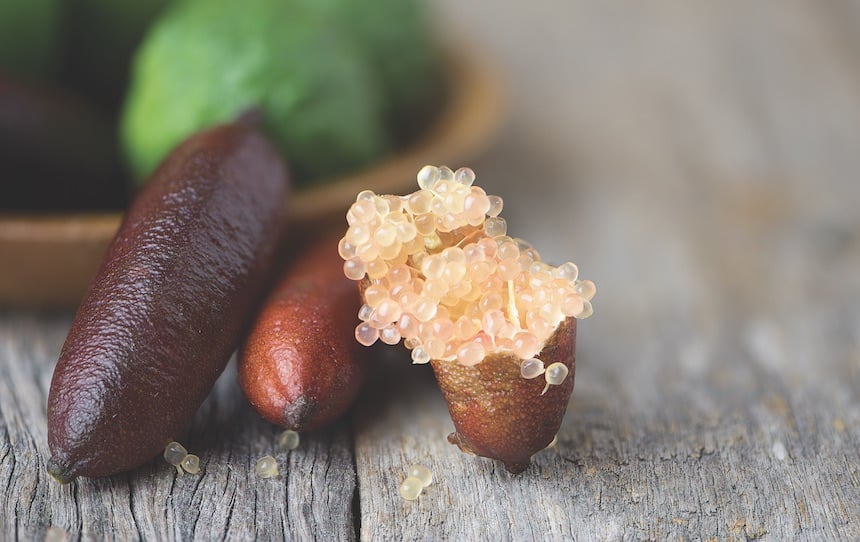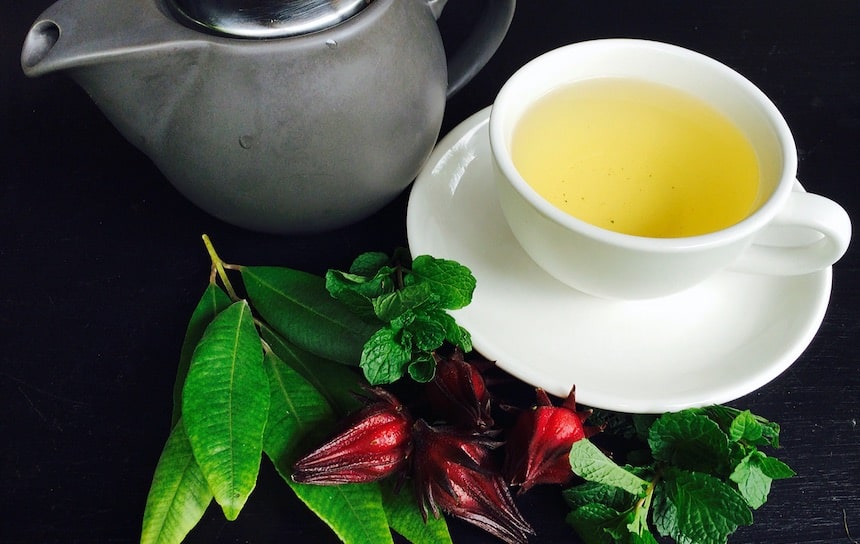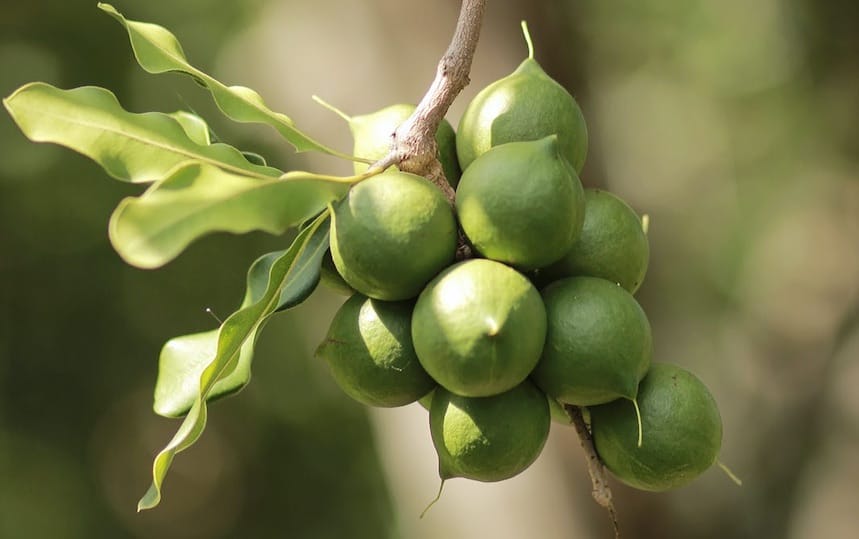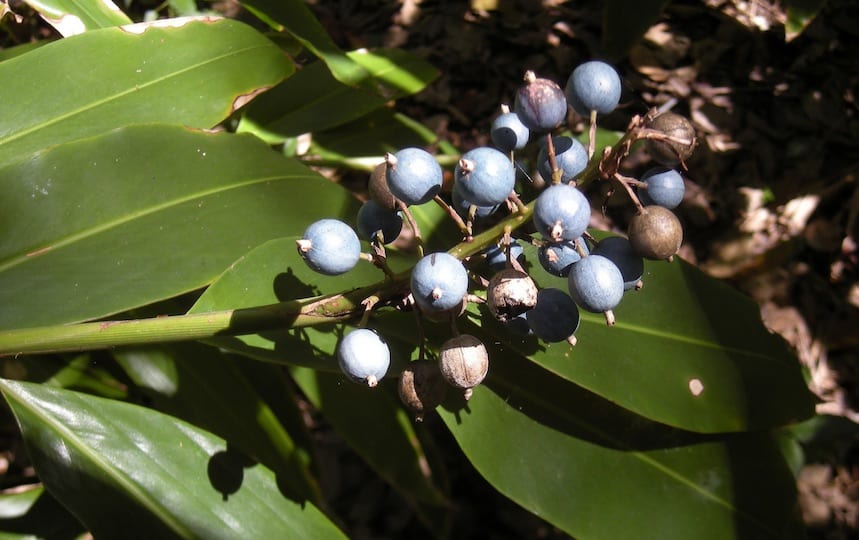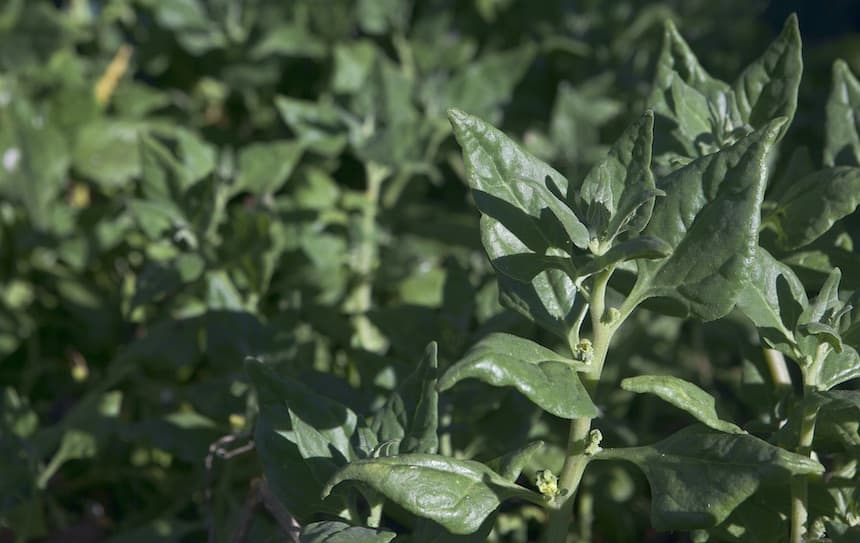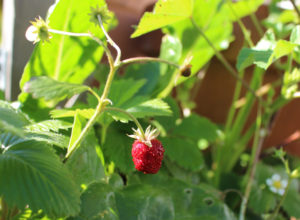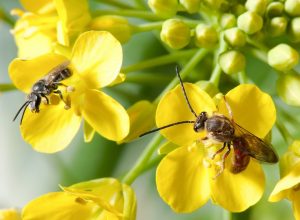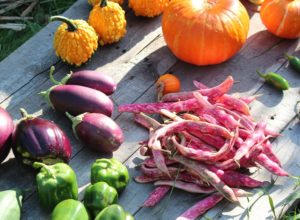Bush tucker – the fruits and aromatic leaves of the tropical and subtropical rainforests of Eastern Australia – provides a whole new palette of spices, fragrances and flavours for the adventurous cook.
These uniquely Australian bush tucker flavours, merged with the creativity stimulated by living in a multicultural society, readily give rise to an endless array of culinary innovations.
You don’t need a lot of space to grow a small collection of bush tucker plants, and integrating these plants into a garden landscape has rewards beyond pleasing the taste buds.
Bush tucker in the garden provide habitat, forage and attract native birds, butterflies and many beneficial insects. They contribute to species conservation, as some rainforest bush foods are threatened or endangered.
5 bush tucker plants to grow in your backyard
Finger Lime Microcitrus australasica
Growing
This small thorny tree, well loved by finches as a safe nesting habitat, is a member of the citrus family, though it looks nothing like your usual citrus tree.
A hardy bush tucker plant, it can handle full sun, shade and even some frost. There are several varieties with different coloured skin; green, black and red. The red-skinned fruit contains pink flesh.
The tree doesn’t spread very wide (1–1.5 m) and can reach a height of around three metres, so it doesn’t require much space and makes a virtually impenetrable hedge if closely spaced. Some nurseries are now grafting a range of Finger Limes of different colours and properties, including seedless varieties.
Uses
The oblong fruit, the size and shape of a small finger, contains perfectly round globules of exquisite lime juice; perfect with salads, avocado, seafood and cocktails.
Lemon Myrtle Backhousia citriodora
Growing
A small rainforest tree, Lemon Myrtle can be pruned to shrub size. The leaves contain aromatic oils, similar to lemongrass but richer. Grows well in shade or full sun and tolerates light frosts to -5°C, although the young leaves are quite frost sensitive.
Uses
Great in Asian dishes and as a herbal tea, its aromatic flavour is unsurpassed.
Lemon Myrtle is a great herb for cooking fish, especially wrapped in broad-leafed palm lily leaves. It makes a zesty herb vinegar for salad dressings and can be used to flavour desserts and baked custards.
The dried leaves can be ground as a general lemon spice and to flavour biscuits, cakes and damper.
Macadamia Macadamia spp.
Growing
The Macadamia tree is a hardy plant. It should be planted just before wintertime. Grafted varieties are recommended for the home garden.
To avoid their root systems drying out, mulch and irrigate. Average height fully grown is around 10–12m but it will take about 20 years to reach this height. Yearly pruning will help them stay manageable. They are excellent as a shade tree.
Uses
Macadamia nuts can be used in numerous recipes and directly substituted for other nuts in cakes, cookies and slices.
To make cream, simply blend the nuts with water to use as a luscious topping for a whole range of sweet and savoury dishes. Macadamia cream can be further diluted as a substitute for coconut milk in many recipes.
Native Ginger (Dargahn) Alpinia caerulea
Growing
Native Ginger is a hardy bush tucker plant that grows in moist, lightly shaded areas as well as in full sun. It can be grown in pots and indoors as well. The plant can reach two metres tall and has attractive bright blue berries. It will bring birds to your garden and add colour to it as well.
Uses
You can actually eat the entire plant. The seedpods provide an interesting spice to experiment with – try chewing a pod as a breath freshener. The centre of the base of the stem can be finely sliced as a spice, used in a similar way to lemongrass stem.
Warrigal Greens Tetragonia teragoniodes
Growing
Known to many gardeners as New Zealand spinach, it makes an attractive groundcover. Warrigal Greens grow virtually year round in frost-free areas and in summer bear best in partial shade.
In temperate climates it grows well from mid-spring (or after the last frosts) through to late autumn. Once established, it will readily self-sow year after year.
Uses
Warrigal Greens must be blanched before use to reduce the oxalic acid content. Add to any dish the same way you would use silverbeet and spinach. Blanched and chilled they make a delectable salad or cold side dish, especially with a serve of macadamia cream.

